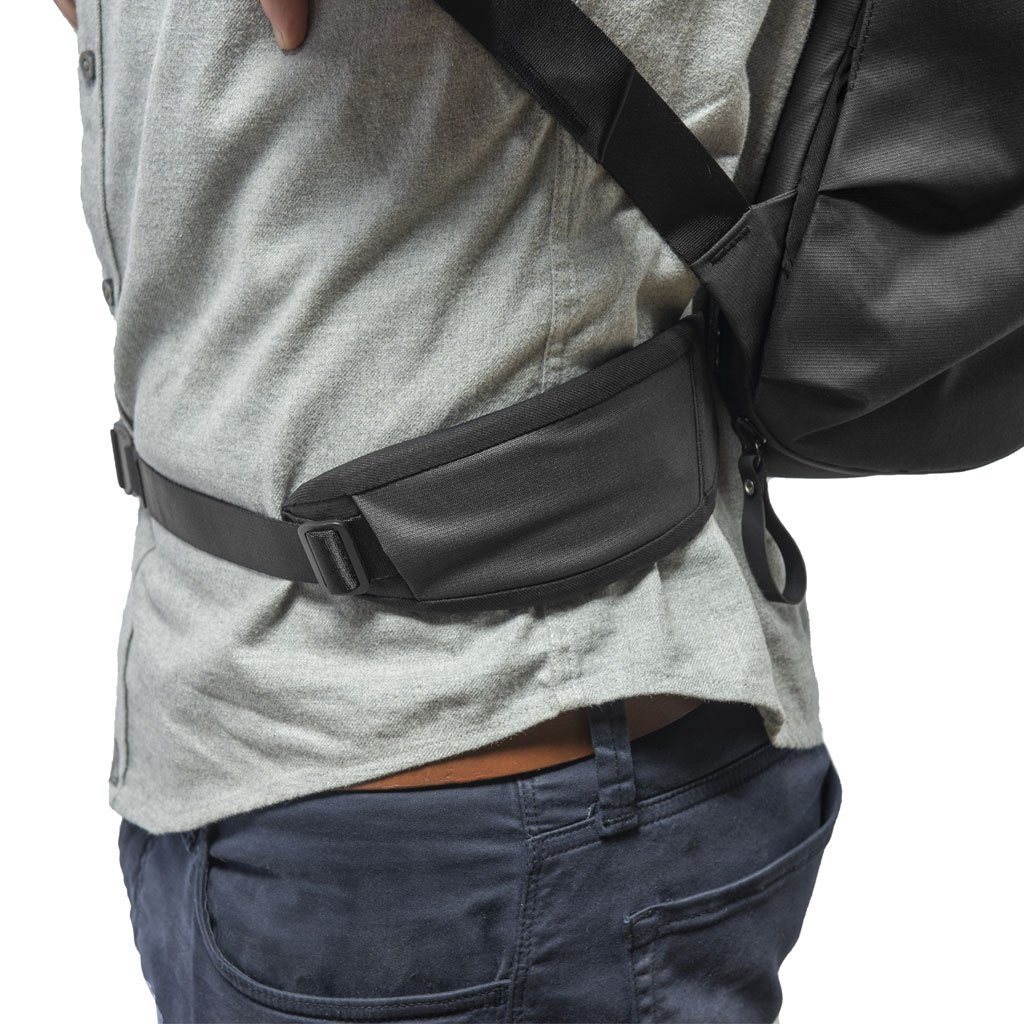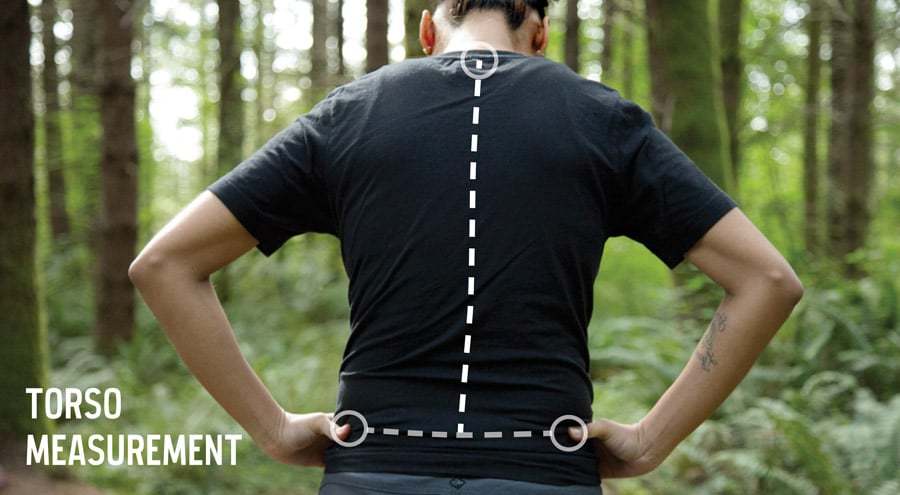How To Add A Hip Belt To A Backpack (DIY Guide For Travel)
The hip belt is in place on backpacks to help balance the weight on your body. You’ll likely find them in bags that have a larger storage capacity since they carry a lot more weight. You need one if you want to travel comfortably and securely. Hip belts are a great addition to travel backpacks since they are one of the best anti-theft devices.
Now that you know what they’re for, you’ll want to know how to add a hip belt to a backpack!
Why Do Backpacks Need a Hip Belt?
The hip belt is there for heavy bags to better distribute the weight that you’re carrying. The strap helps move the weight from your shoulders to your hips, making it less stressful on your back.
A hip belt can also carry between 60% and 80% of the bag’s weight- making it feel like you’re carrying nothing! This feature is essential for hiking backpacks.
So, if you’re carrying 22 pounds, the belt removes about 17.6 pounds off of your shoulders. It’s as simple as buckling the belt.

What Makes a Good Hip Belt For Travel?
Understand Hip Belt Components
Hip belts aren’t like ordinary belts that hold up your pants. Instead, they are designed with maximum comfort in mind. There are three main components to a hip belt:
- 1Padded “wings” to cover your hip bones and offer some additional protection.
- 2Flexible webbing straps that can adjust as needed. Based on how many layers you’re wearing (a tshirt vs full winter gear), you may need to adjust the hip belt quite a bit.
- 3A buckle – fairly straightforward, but you want to make sure the buckle is wide and generally flat so that it’s not digging into your lower stomach where it is connected.
Determine Hip Belt Length
Hips belts are not one-size-fits-all, just like people aren’t! It’s absolutely crucial that you find the right sized hip belt if you expect to see any benefits from using one. The hip belt must be long enough to properly cover your hip bones from back to front. This ideology is the same as when looking for the right size of backpack depending on your height and back size.
If it is too short, the load of the backpack will still remain mostly on your shoulders and not your hips. As a result, if your bag is heavy, it will likely feel like it’s pulling you backward. The additional stress will bother you in just a short amount of time. See our tips on finding the right measurements, below.
Stable Webbing Straps
The webbing straps shouldn’t transfer any weight. However, you still need them to be very stable to support the weight of the bag against your body. The more stable they are, the better. You would not want a wobbly bag while backpacking, right?
Padded & Weight Bearing
The belt should also be padded and weight-bearing. If it's not, then the strap won't actually serve a purpose. It’s a deception and shouldn’t be on the bag in the first place. You'll need to check for labeling that says the strap is weight-bearing. If not, you should look into other bags.
Wider Than 2 Inches
The hip belt will need to be wider than 2 inches. When it is, this allows the belt to stay stable and hold more of the weight of the bag. That way, you can feel more of a relief in your shoulders when using it.
Soft Foam For Comfort
You also are sure to appreciate the soft foam of many different hip belts. With the comfortable foam in place, it won’t feel like the bag is digging into your skin. Additionally, it makes it easier for you to carry the bag for long periods of time.
Pocket Availability
Having pockets on the hip belt also makes it more efficient to store items on your person- you can think of it like an included fanny pack! Many people use them for snacks and to keep their wallets since it’s easy to reach the belt.
How To Add A Hip Belt To a Backpack (Step-by-Step Guide)
First, you’re going to need to purchase a weight bearing hip belt. Once you have one, you’ll follow these steps:
1. Line Up the Velcro
Start by adding your hand to the bag’s sleeve- there should be velcro there. You want to make sure it lines up with the velcro on the hip belt.
2. Add a Piece of Cardboard
Next, you’ll want to use cardboard to provide more support. Use a piece that’s a tiny bit longer than the bag’s sleeve. You want it to fit tightly. Then, slide it in.
3. Add The Hip Belt
The piece of cardboard should go right in. Then, put the velcro and hip belt back into place. Connect the velcro panels and squeeze them tightly.
4. Take the Cardboard Out
Remove the cardboard- it was just there to keep everything steady.
5. Connect the Belt Stabilizing Straps
Next, you’ll need to set up the stabilizing strap. Pull the strap through the bottom of the buckle. You may want to use pliers or another tool to get a solid grip on the material. Then, pull it through the second area on the buckle. Do this again on the other side.

How To Fit A Hip Belt (Measuring Tips)
Use a tape measure to measure your torso. Follow these steps to get the best measurements:
- 1Find the bump on the back of your neck that sticks out at the base.
- 2Measure from that point to the top of your hip bones. Make sure your hands are flat when you do this.
- 3This is the length of your torso!
Now that you have, you can find several options for your size. The hip belt needs to rest against your hips to actually work. You want to use a backpack that allows the hip belt to sit in the correct place. However, there are fully adjustable options out there that should work for most people.

People Also Ask (FAQs)
How tight should the hip belt be?
You want the belt to feel tight and secure but not digging into your body. It shouldn't feel like it's pinching you. You also need to make sure that it's sitting just at the top of your hips, without sliding around a lot.
How do you fit an Osprey hip belt?
Osprey backpacks often have built-in hip belts. According to the company, “To determine hip belt size, measure around the hips at the iliac crest, not the waist. The padded portion should wrap well around the hips, leaving a gap of 3" to 6" between the tips of both hip pads when securely tightened.”
Do hip belts help with backpack pain?
Yes, hip belts can help by moving the weight distribution over your body. You experience a much lighter back, which removes a lot of the back pain that comes with heavy packs.
Conclusion
Overall, there are many uses to having a hip belt! You’ll want to make sure that you add one to any bag you know you’re going to have to wear for long periods. You can always make your own.

